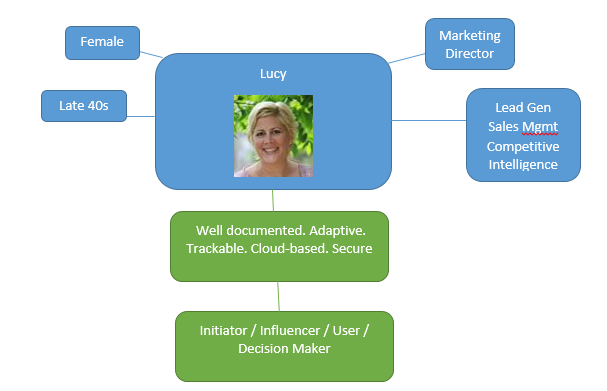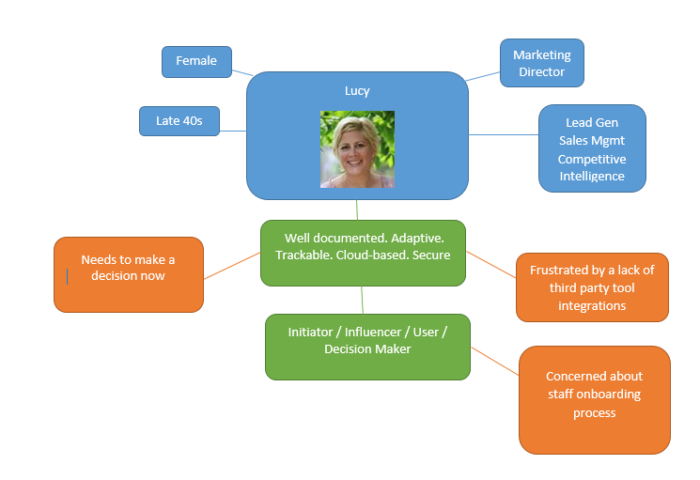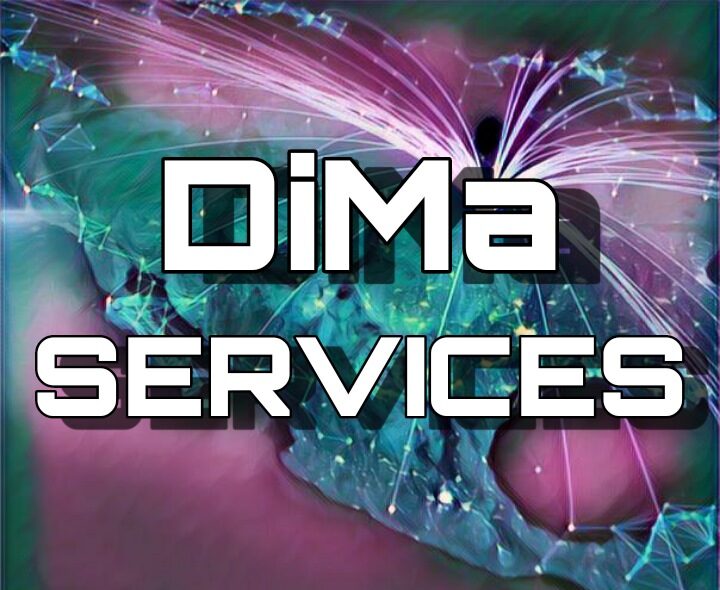Creating a customer journey map is enough to make even the best marketer freeze in their tracks and realize how little they really know about their prospects.
If this sounds like you, don’t worry.
Even if you’ve never created a buyer persona before, I’ll help you make sense of the process by giving you a sort of “map” to help you better understand who your customers are and what they want.
Let’s take a closer look.
Starting Fresh: The Basics of the Customer Journey Map
A customer journey map is a diagram that illustrates each step in the buyer journey, including who the customer is, what their needs are, and what objections they face.
This map makes it easier for sales, marketing, and executives to make more informed decisions and humanize your audience.
The very first step in a customer journey map is the core demographic information about your customers, such as:
- Gender
- Age range
- Job title
- Job responsibilities
- Salary
- Region
- Company size
You’ll likely find most of this data in your CRM. If not, a survey can give you a clear picture of who your audience is and what they do.
I also recommend “humanizing” the persona by giving them a name and image. This brings out more of our emotional, empathetic side, versus looking at the potential customer as a number to slot somewhere in a sales funnel like a puzzle piece.
Now that you have the basics let’s look at an example of a customer journey.
A Customer Journey Map Example
For our example here, we’ve chosen to work with Lucy, a marketing director in her late 40s.
Her job primarily entails lead generation, sales management, and gathering competitive intelligence.
She organizes and prioritizes campaigns. She’s a pro at gathering competitive intelligence and uses it wisely to reinforce the brand while cementing customer loyalty in a very competitive marketplace.
Because of the huge growth in social media, Lucy’s looking to streamline the interaction process on social media without losing the “personability” of the brand.
She’s in the market for a solution and wants to make a confident decision quickly.
So with this in mind, our persona map is going to look something like this so far:

To stick with the map concept, this is our starting point. Next, it’s time to look at the journey.
Our first stop along the map is the buyer’s needs.
She has the basic research to know what’s out there. If we were looking at this from a traditional sales funnel point of view, she’s at the “comparison shopping” stage.
She’ll be looking to make a decision soon.
Understanding the Buyer’s Needs
Buyers are eager to tell you what they need. All you have to do is ask.
Basic lead follow-up and nurturing questions can reveal quite a bit. Simple polls and surveys can often reveal a great deal about where the buyer actually is in the process (and whether they have an urgent need for your product or service versus basic curiosity).
Even if we don’t know specifically what they need, we can make a few general statements that apply them to our persona.
What would someone in this job typically need from our solution?
For starters, the buyer likely needs the product to be well documented. She’ll be managing dozens, perhaps hundreds of staff members – some of whom (based on age) may be more technically savvy than she is.
Some of the staff may pick it up quickly; others may need more time. We’ll add the needs and the persona’s place in the decision-making process (one persona can have multiple roles in the decision process — they can be a user and initiator, for example)

There’s also the fact that whatever solution needs to be adaptive and flexible to accommodate existing platforms and tools.
The company likely has certain procedures and requirements that will be added to the mix, like cloud-based access and specific security protocols.
These factors can influence and even conflict with what the primary buyer wants. The committee often makes decisions like these, which lengthens the time needed and the requested features.
Dealing with Common Objections in Customer Journey Maps
Like all maps, there will be roadblocks that prevent your customer from taking action. You’ll want to outline those in your customer journey map.
There are constraints and concerns, frustrations, and issues that will affect their decision. You can brainstorm these obstacles and add them to your customer journey map to ensure that sales know how to address the most common objections before becoming major pain points.
You also have to decide where this buyer falls on the scale of decision-making.
Will they be using the product? Influencing the decision-maker? Initiating contact with the company? A mix of all of these?
Make a note of these objections and the buyer persona’s place in the decision-making cycle on your map.
Following our example, we end up with something like this:

Here, we’ve managed to discover (and brainstorm) the buyer’s potential:
- Needs
- Concerns
- Frustrations
- Urgency/Timeframe to Buy
- Place in the buying cycle
- Requirements
All the kinds of sales-propelling information needed to acknowledge objections, concerns, and frustrations while concentrating on needs, requirements, and urgency.
We’ve learned core demographics about our buyer and key information that may be preventing them from taking action or details that could move a sale into the next stage.
Our customer journey map is less of a neatly-organized, bulleted list, and more like a mind-map that’s always being adjusted and revised. It may not be as tidy, but our customer journey map is closer to the actual customer experience — and therefore far more useful.
Think about the last time your company made a major purchase. It’s seldom a “beginning to end” one-time shot, right?
There are many details to hammer out, presentations to sit through, and suggestions and sign-offs to gather.
It’s a big process, and a fancy list of bullets just doesn’t cut it anymore – not in today’s two-way communication world.
Create a Customer Journey Map for Each Type of Customer
Now, you need to go through this entire process with every type of buyer your company encounters. Each type of customer will have a different buyer path, objections, and challenges.
For example, if retail, you’ve got suppliers, wholesalers, resellers, and a whole avalanche of personas out there. Each buyer you have must be addressed individually.
Conclusion
Don’t panic, prioritize. Focus on your most profitable customers first and find the unifying threads that tie them together, then build on that persona. Once you have those down, start working down the list until you have all your customer journies mapped.
And remember that buyers are multi-faceted human beings.
Sometimes they make decisions that go against the grain of even the most well-developed persona. It happens.
Remember, the journey is just as important as the destination, and the easier you make that journey, the more receptive the buyer will be to taking the action you want them to take.
Are you planning to create a customer journey map? What is holding you back?
The post How to Create a Customer Journey Map (Even if You Have No Idea Who Your Customers Really Are) appeared first on Neil Patel.

